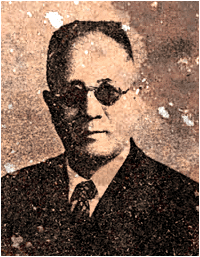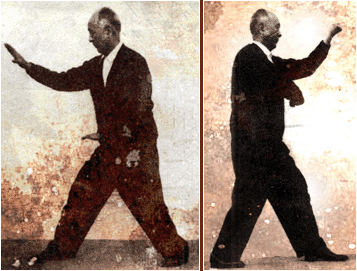<--- | --->
| Chen
Panling was particularly interested in standardizing forms, training methods and
theory, believing that only by doing so would the general level of martial arts
in China be improved. In many ways, he opposed traditional notions of master-disciple
relations and embraced a more open attitude to teaching. One story often told
by his students is about Chen's staff studies with an old master in Bejing. While
sparring with the old master, Chen managed to overpower him , causing the other
students to laugh. The old master scolded them, saying that only young Chen should
stay that day since only Chen had progressed in the art. Chen did not hold back
either in his teaching or in his practice. A hydrolic engineer by training, Chen
believed in applying scientific methods to the training of martial arts and had
little time for mystical claims related to the martial arts. After moving to Taiwan, Chen continued his involvement in Chinese martial arts as head of the Chinese Guoshu Association. From 1950 to the time of his death in 1966, Chen taught his arts daily at Model Ranch in Taichung's western suburb. |
|
| During this period he also published several books on martial arts, among them Textbook of Chinese Martial Arts, which included sections on shaolinquan, taijiquan, xingyiquan and baguazhang. Several books were later published by Chen's eldest son Chen Yunchao and one of Chen's senior students,Lei Xiaotian, detailing Chen's martial arts: Xingyiquan textbook, An Outline of Xingyiquan and the Mother Fists, The Twelve Animals of Xingyiquan, Dragon Style Bagua Rambling Palm, Dragon Style Bagua Double Sword, Dragon Style Bagua Staff, Plum Blossom Double Sword, Dragon Style Sword, Pure Yang Sword and Fengquan Textbook. |
|
<--- | --->

